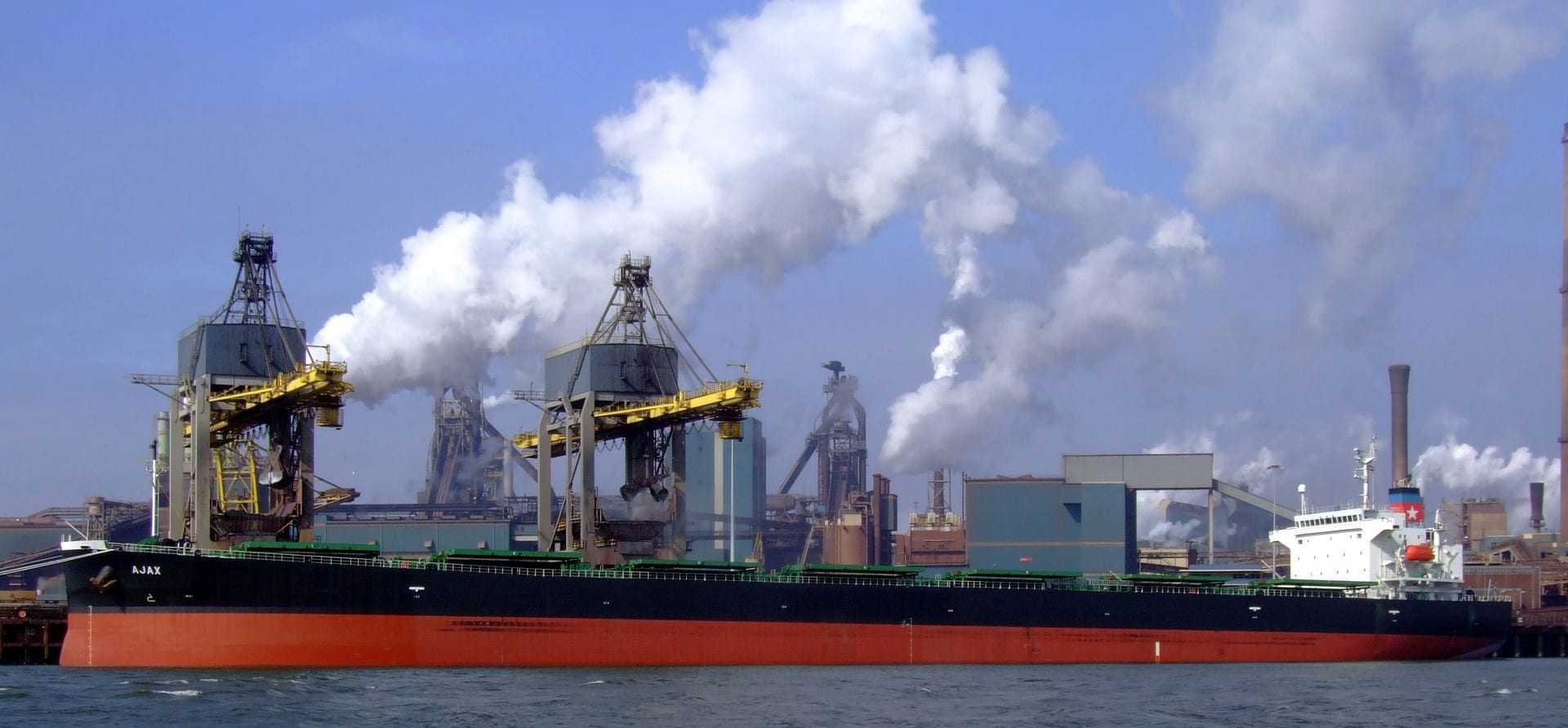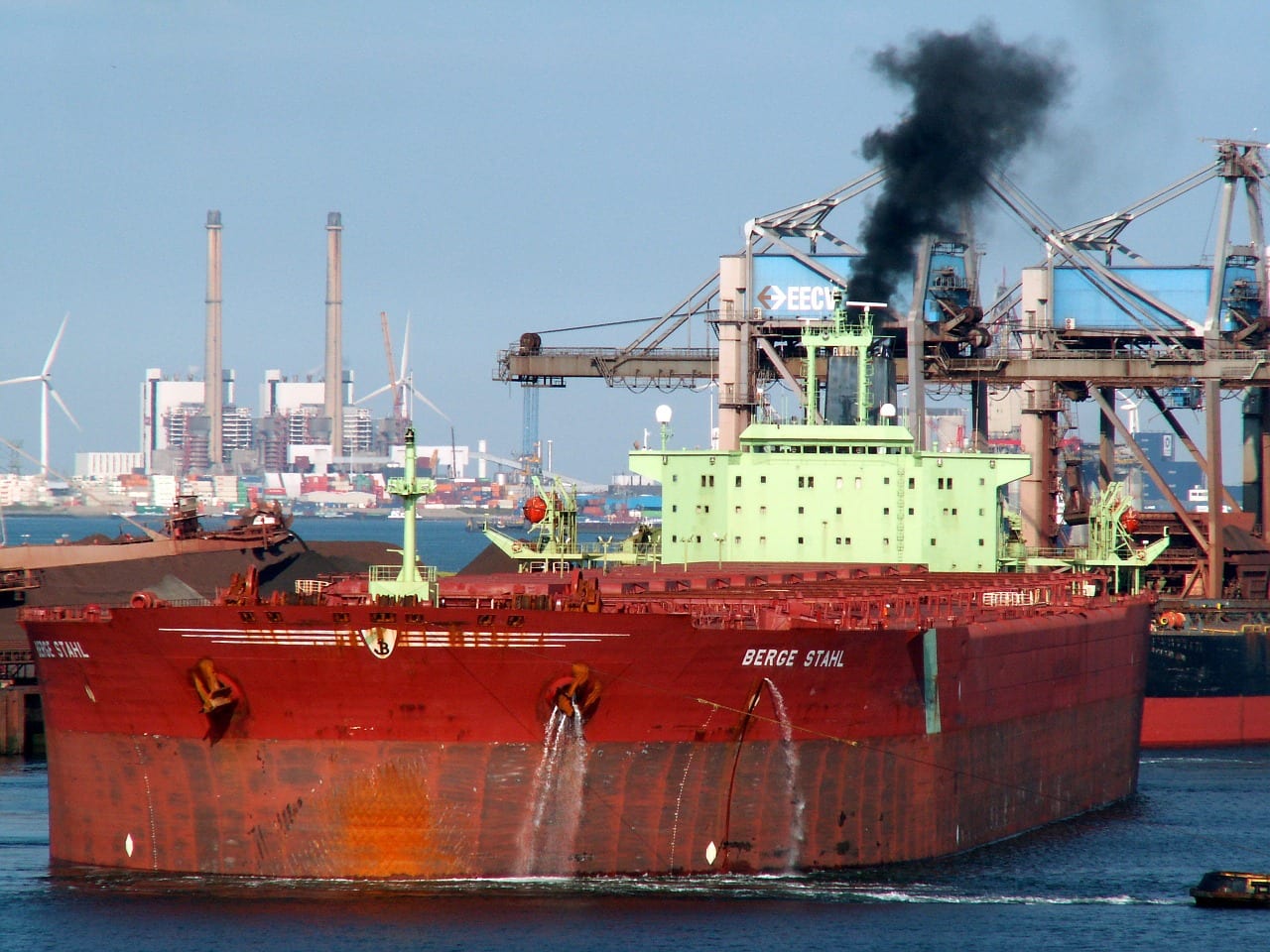Delivering on Paris: how the UK responds to its climate obligations
By ucqbpow, on 19 April 2018
Steve Pye, Francis Li, James Price
In a speech at the meeting of Commonwealth leaders in London on Tuesday, Claire Perry, the minister for Climate Change, announced that she would be seeking advice on strengthening UK climate targets, following publication in October this year of the Intergovernmental Panel on Climate Change (IPCC) Special Report on a 1.5°C warming limit.
This means that the Committee on Climate Change will revisit their analysis and recommendations on the implications of the Paris Agreement on the UK’s long term targets, first provided in 2016. In that report, they concluded that while ‘the Government has indicated it intends at some point to set a UK target for reducing domestic emissions to net zero,……… it is too early to do so now, but setting such a target should be kept under review.’It appears that a review is now imminent.
The CCC’s 2016 view, which was to maintain the status quo on ambition, was based on the need for more evidence on how the UK could achieve a net-zero target, and a prevailing view that the current 80% reduction framework was very ambitious and already represented a considerable challenge for government – thereby raising the question as to what could be gained from strengthening the target. Not a huge amount has changed in the last 18 months; for example, the challenge facing ministers to meet existing targets is evident, as demonstrated by the recent Clean Growth strategy failing to meet its own climate goals, and the policy gap identified by the CCC.
Shortly after the CCC gave its recommendations in 2016, we published a paper in Nature Energy (described in this Carbon Brief article) that explored this very question – what are the implications of the Paris Agreement for UK climate targets?We found that the UK energy system, which accounts for the vast majority of CO2emissions, would need to be carbon emissions free at some point in the 2045 to 2070 period under a 2°C target. The analysis also produced more stringent reduction trajectories than currently set out under the UK carbon budgets.
Making a more equitable contribution to global efforts, and pushing well below 2°C, both aspects which are embodied in the Paris Agreement, would require net-zero emissions by 2045. This means no oil use in our cars, an electricity system based wholly on renewables and nuclear, our homes heated by low carbon electricity or heat but not gas, and industry adopting new low carbon processes and energy.
The target year of 2045 is based on a UK allocated budget of 4 GtCO2from now until eternity. UK emissions are at around 420 MtCO2(including international transport), meaning that if current levels persisted, it would be around 10 years before this budget was used up.
Pursuing an even more ambitious 1.5°C target (which we did not consider in our 2017 paper) would mean leaving the UK with a 30% lower carbon budget than our most stringent 4 GtCO2case. Meeting this target would require truly heroic assumptions that may be difficult to envisage, given that the 2045 net-zero target in our study implied incredibly fast annual emission reductions of 9 %/year and eye-watering economic costs. Furthermore, we used optimistic assumptions on the role of CCS (and negative emissions technologies) which in effect increased the effective headroom available in the UK budget from 4 GtCO2 to 10 GtCO2. Furthermore, we assumed that long term transition policies could be put in place and maintained over time, unaffected by economic crises, social upheavals, or political backsliding on prior commitments, which may be viewed as ambitious assumptions indeed.
The fact that our analysis raised serious questions as to the feasibility of pursuing this type of goal means that proper scrutiny of higher long term ambition is crucial, in view of the science and with a full view of the possible options. And this reconsideration is timely; our paper made the point that to put in place the necessary policies now, we needed to be clear as to the longer term goal. Too little action or poor infrastructure choices in the near term puts climate goals at risk, without the time to take corrective action.
Reflecting on our paper, there are some important avenues for future investigation, to explore what longer term targets are needed, and the types of policies required to achieve them. Firstly, for those pathways that were feasible in our study, they typically were found to have had a significant contribution from CCS. The lack of serious policy consideration on CCS means that such pathways must be revisited, and alternatives explored that are more robust to any failure to scale future CCS deployment. A recent paper in Nature Climate Change offers some ideas in this direction.
Secondly, there needs to be more focus on the multiple options that might be available for reducing our end-use energy demand. This means testing options that are often omitted from models e.g. taxes on specific travel demands e.g. aviation, changes to urban planning that impact how we use energy, and the impact of technology on energy services e.g. mobility. And crucially, we need stronger scrutiny of the demand drivers going into models, which left unquestioned can lock us into higher emitting pathways but which may be fundamentally flawed. Another recent paper urges research in this direction.
Thirdly, and in view of the above, we urge efforts to take stock on what targets need to be achieved by when, in line with the spirit of the Paris Agreement. That means a UK net-zero target with a specific date attached, with this point in time reflecting the key principles of equity, the UK’s capacity to act as a leading G7 economy, and the science. The strength of such a target will be that it will serve to reduce ambiguity regarding when sectors need to achieve zero emissions, providing clarity to policy makers and investors.
As the CCC considers their advice towards the end of this year, there is a real opportunity to position the UK as a global leader in the debate on what actions countries can take to meet the extraordinary challenge agreed in Paris at COP21. Whatever is proposed, it will need to be followed up by a radical set of implementation policies to move beyond weighing our options and placing the UK firmly onto a net-zero pathway.
Mapping synergies and trade-offs between energy and the Sustainable Development Goals: how, why, and what’s next
By ucqbpow, on 20 November 2017
Around the same time as Millennium Development Goals were nearing the end of their term, and were being turned into Sustainable Development Goals, a group of us at UCL, from disciplines as wide ranging as social, natural, legal and engineering sciences, first started to come together. Reason? Our shared interests in all things energy: infrastructure, technologies, access, equity, poverty, law, generation and more. The broad range of areas of expertise in the energy field enabled facilitation of what we all agreed were timely and important discussions around the role of energy in and for the achievement of SDGs. That energy was missing from the MDGs was clear. Perhaps we would now have fewer than over a billion people worldwide without even basic access had there been a stronger focus on energy over the MDGs’ operational period, who knows. Yet that rather striking gap got noticed and turned into SDG7, opening up new opportunities. The UCL Energy and Development group, which is what participants of our gatherings eventually established, also saw it as an opportunity: one to contribute to the energy dialogue, much more critical now than ever before.
With open minds, we embarked on a journey to explore the significance of energy in the move towards sustainable development, and that of holistic thinking when considering all the Goals included in the 2030 Agenda. It didn’t take us long to recognise the fundamental role of energy in the pursuit of all other SDGs, so the (initially not so) obvious starting point was to map out synergies and trade-offs between efforts to achieve SDG7 and the 2030 Agenda as a whole. In the course of an iterative process of expert elicitation, we found evidence pointing to three key domains of synergies and trade-offs where decisions about SDG7 affect humanity’s ability to: realise aspirations of greater welfare and well-being; build physical and social infrastructures for sustainable development; and achieve sustainable management of the natural environment. By highlighting the Goals and Targets, despite being set as separate ones, are overlapping and achieving one will not be possible without achieving many others, a sort of framework slowly began to emerge. Another framework?!- you might ask. Sure, there are plenty already out there, but not many (if any at all, correct us if we’re wrong!) that can be used as a guide for designing interventions conscious of the complex web of synergies and trade-offs within and among all SDGs. Being mindful of where efforts can (and should) be complimentary, as well as giving a careful consideration to those Goals and Targets that might have conflicting interests, where the achievement of one might come at a cost to another, or might make the achievement of other ones more difficult (e.g. rapidly scaling up energy access while at the same time ensuring low emissions), will be pivotal for maximising positive outputs and alleviating/eliminating negative ones.
This work is our early attempt at identifying and collating evidence of the synergies and trade-offs in the 2030 Agenda, encouraging the wider community of academics, practitioners and policymakers to contribute to and build on. It can be seen as a map for policymakers and other stakeholders working towards the achievement of SDGs, particularly, though not exclusively, in the energy field. Most importantly, however, it’s an invitation to join us in continued efforts at gathering further evidence, reaching a much bigger audience to inform and engage with. We hope you’re in, one Goal and another!
Iwona Bisaga
PhD Student
Centre for Urban Sustainability and Resilience
UCL Department of Civil, Environmental & Geomatic Engineering
Stakeholder Engagement Study: What are the social issues affecting wind energy deployment?
By ucftjm3, on 6 July 2017
REAccept is a project aiming to improve the social acceptance representation of our energy system models, starting with onshore wind energy and highRES[1], funded by the BSEER Strategic Development Fund and wholeSEM. Our initial scoping exercise took run from May through June culminating in a stakeholder workshop on 22nd June in Cambridge.
The core concept of the project is to tackle social acceptability without pinning it down to familiar themes in the literature. This meant designing a workshop where the participants were in the driving seat from the start, framing the discussion the way that suited them. With the ultimate aim of getting quantifiable results to then apply to the model, this was a challenge.
Our stakeholders included representatives from local planning authorities, the county council, local environmental groups, national NGOs, wind energy developers, and a community energy scheme. The group took part in a series of exercises designs to first elicit the issues, then to create a categorisation, assign priorities, and finally to dig deeper into the top priorities. The final session involved an in depth discussion of the nature of the problem at hand, who it affects, how flexible they may be and what could be changed about the wind energy project to reduce the impact.
Discussions revealed that challenges facing on-shore wind energy are complex and multi-faceted. Key issues to emerge were reductions in house prices, visual impacts, threats to habitats and natural beauty; however, these proved very difficult to quantify in practice due to the site-specific nature of many of those impacts.
We will be writing up the outcomes of the workshop to feed into a larger proposal.
Our thanks go to all the participants of our workshop for the highly informative afternoon!
Andy Moore
On behalf of REAccept
Dr Gesche Huebner
Dr Marianne Zeyringer
Dr Julia Tomei
Oliver Broad
Dr James Price
Andy Moore
[1] http://www.ucl.ac.uk/energy-models/models/highres
The making of a globally sustainable energy system
By ucfaspy, on 14 November 2016
Blog by Steve Pye, Paul Ekins, Ian Hamilton, November 2016
As delegates at COP22 in Marrakech convene to discuss how to implement the Paris Agreement, there is a continuing focus on how to move to a sustainable global energy system. The challenge is that fossil fuels have long been the mainstay of the energy system, and an essential driver of growth. Rapidly reducing our reliance on their use is no small task, but one that is essential if we are to succeed in achieving the climate ambition set out in the December 2015 Paris Agreement. The challenge is brought sharply into focus when we consider that the global energy system accounts for 65% of anthropogenic GHG emissions[1], but will need to be a net zero-emitter at some point between 2050 and 2100.
The challenge
The barriers to this transition are immense. Read the rest of this entry »
The highs and lows at the United Nations International Maritime Organisation’s 70th Marine Environment Protection Committee
By ucft572, on 11 November 2016
 On 24-28 October 2016, two weeks before the Marrakech COP22, the International Maritime Organization (IMO)- the UN’s body responsible for regulating shipping, met for the 70th session of the Marine Environment Protection Committee (MEPC). With a heavy agenda on the table, colleagues from UMAS closely followed two key agenda items, review of the implementation date for a sulphur cap (item 5), and, reduction of GHG emissions from ships (item 7).
On 24-28 October 2016, two weeks before the Marrakech COP22, the International Maritime Organization (IMO)- the UN’s body responsible for regulating shipping, met for the 70th session of the Marine Environment Protection Committee (MEPC). With a heavy agenda on the table, colleagues from UMAS closely followed two key agenda items, review of the implementation date for a sulphur cap (item 5), and, reduction of GHG emissions from ships (item 7).
On the first day of the committee meeting Dr Tristan Smith and Carlo Raucci along with the lead authors of the study presented the findings of the IMO fuel availability study as a side event presentation. The presentation was followed by another study using the same terms of reference but coming to a contrasting conclusion. Read the rest of this entry »
Emit now, pay later: The case of shipping and its GHG emissions
By ucft572, on 18 October 2016
Blog by Nishatabbas Rehmatulla and Isabelle Rojon (UMAS)
Something we’ve got used to in our daily purchasing habits is the term ‘buy now pay later’. Whilst this may be good for our personal lifestyles and ease the cash flow somewhat, we still have to pay, only later and usually with added interest. The same goes for our climate: we emit now, but due to finite CO2 budgets, we will ultimately have to pay and it is up to us to decide whether we prefer drastic mitigation or adaptation action as payment. For quite some time shipping, which accounts for approximately 2-3% of global CO2 emissions, has dodged the emissions regulatory bullet for various reasons (relative to other sectors), one of them being the public’s lack of awareness of the industry. Unless you live next to a busy port, you probably don’t think too much about the global shipping industry and its carbon footprint. Read the rest of this entry »
A low carbon industrial strategy?
By ucqbpsm, on 19 July 2016
DECC has been absorbed by BEIS. I’m cautiously optimistic about this because climate policy, particularly energy efficiency, didn’t really work out on its own. The value of DECC was securing the consensus for the 2008 Climate Change Act. It’s record in actually delivering effective policies, as the Committee on Climate Change bluntly pointed out last month[1], is less than stellar. Read the rest of this entry »
RIP DECC – but will we miss you?
By ucqbpsm, on 15 July 2016
So after 8 years the DECC experiment is over. The immediate reaction is mixed with some saying that climate policy has been diluted. Others say that linking climate and industry policy is a sensible approach. Who is right?
On energy efficiency, I’m optimistic. In DECC, energy efficiency was isolated in Whitehall. It needs to ride the waves of other policies and not compete with them. The strategic case for energy efficiency is compelling – but that is better done by a department of business and not a department of carbon.
This is particularly true now we are to have an industrial strategy. Productivity, competitiveness, risk, cost and value are all pivotal industrial drivers, and they are all key selling points for energy efficiency. It should have a chapter of its own.
I think the same applies to energy efficiency in homes. The reason why the Green Deal was such a disaster was that the “business case” for us as householders never worked. But more importantly selling energy efficiency to us is – or should be – a business proposition.
And finally I don’t buy the assertion that energy efficiency will get buried. In 1992, we rescued energy efficiency from the old DTI because it wasn’t safe in the hands of neoclassical DTI economists. But now we have the Climate Change Act and, so far, no-one is trying to unpick that.
So far.
photo credit: iStock
What would a better London transport system look like? How do we get there from here? And what could the next Mayor do about it?
By Andrew ZP Smith, on 3 May 2016
The next Mayor of Greater London has an easy time and a hard time ahead.
The incumbent has shown little intention to do much with the power of the office. So the new mayor won’t have to work too hard to look busy or effective, by comparison. That’s the easy time ahead.
But, in terms of managing London’s transport, they have a very hard time. For the first eight years of London’s new government, investment spanned all areas of transport, with vigorous interventions, and lots of long-term strategic planning and research. All that changed, with the change of mayor and the global financial crisis in 2008: in particular, the strategic planning and research capacities in Transport for London were cut back deeply. This is an apparently cheap strategy – a mayor that cuts long-term planning, but who had a predecessor who’d invested deeply in it, gets to live off yesterday’s investment, while leaving nothing for their successor. Like a farmer who only harvested and never sowed, there’s nothing at the next harvest. So when the next mayor wants to know what the long-term planning and strategic capacity is, they are in for a bit of a shock. And the picture gets worse: the money London receives from the Treasury to help meet the ongoing expenses its transport system, is to be phased out, leaving London with a £0.7bn shortfall. However, capital expenditure is still in place, and the go-ahead has been given for Crossrail 2. This a policy mistake that keeps getting repeated in transport in Britain: we invest in infrastructure, and then fail to provide for its operation and maintenance. Read the rest of this entry »
Oil Producers Meeting in Doha, Qatar: Technical opinion
By Andreas Economou, on 14 April 2016
The objective of the so-called Doha Meeting in Qatar, on April 17, between the world’s top oil producers is fairly straightforward: to agree on a collective OPEC and non-OPEC oil output freeze to January 2016 levels, in an effort to halt the nearly two-year oil price collapse. Yet, the actual scope of the agreement is way less ambiguous and far more OPEC-specific.
Amid the most dramatic quarter since the price fall (1Q2016) – i.e. prices hovering below $30/bbl to a 13-year low, a persistent supply-driven bear market, global economic growth forecasts being downgraded and a deep contango encouraging stocks to rise above 5-year average – Saudi Arabia, Venezuela, Russia and Qatar have revived a very well crafted “As-Is Agreement”. The terms of the agreement are relatively painless for the participating oil producers, which are already producing near their capacity limit and near their average forecast levels for 2016 –see Table 1. For all oil producers, excluding Saudi Arabia and Iran, announcing that they will not increase production in the near-term, confirms merely what was already known given the global squeeze on capital resources towards upstream developments. Read the rest of this entry »
 Close
Close









